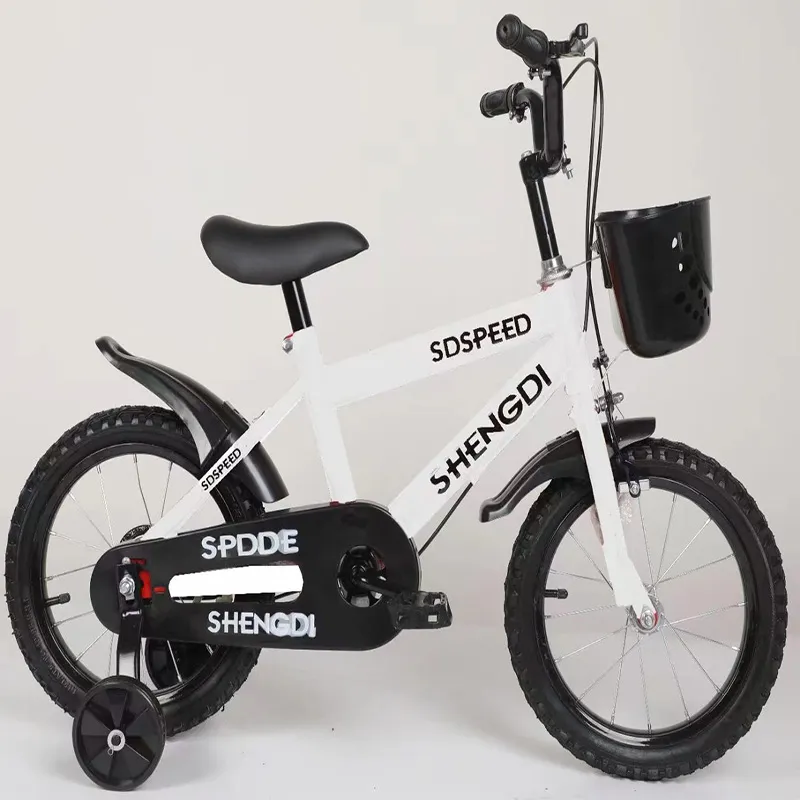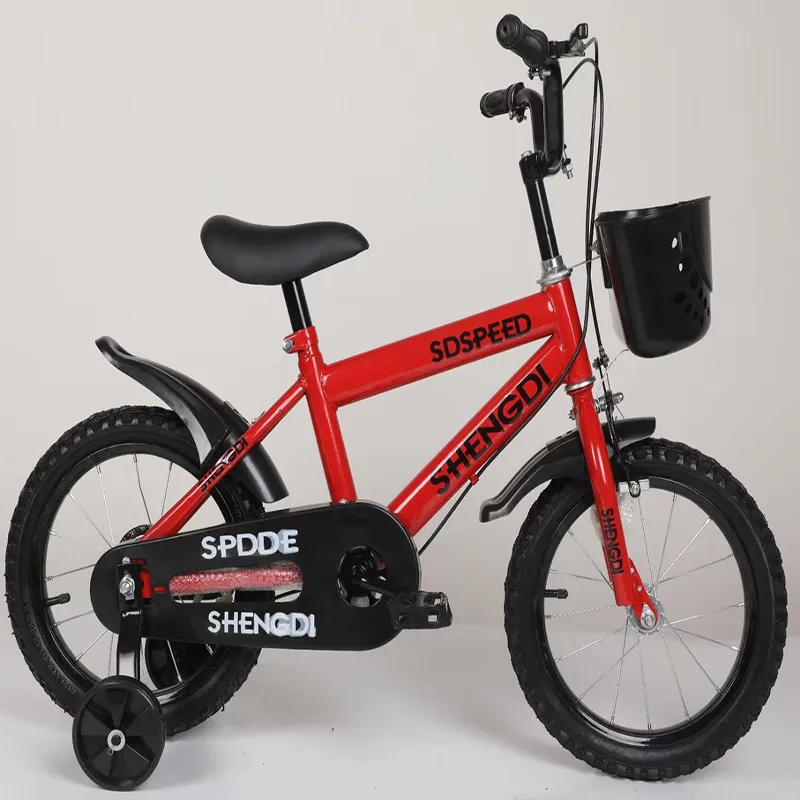Aug . 04, 2025 05:20 Back to list
Best Kids Bicycle: Safe, Fun & Easy Ride for Beginners
The global bicycle for kids market continues to exhibit robust growth, propelled by safety-centric innovations, sustainable materials, and demand for both children's bicycle trailer solutions and cutting-edge kids' bikes. This in-depth industry analysis leverages empirical data, international standards, and practical use cases to guide families, distributors, and B2B clients in selecting the optimal kids’ bicycles and accessories.

Industry Trends: Safety, Customization, and Standardization
According to Grand View Research, the bicycle for kids market surpassed USD $8.430 billion in 2023, with a projected CAGR exceeding 4.9% by 2028. Key drivers include rising urban bike infrastructure, stricter ISO 4210 safety standards, and increased consumer demand for feature-rich, adaptable children’s bikes.
- Technical Advancements: Integration of both coaster and handbrake systems, height-adjustable stabilisers, and ultra-light aluminum alloy frames.
- Accessory Integration: Boom in “children’s bicycle trailer” for family outdoor activities, encouraging multi-age mobility solutions.
- Certification & Compliance: Wide adoption of ISO 8098 (cycles for young children), EN 14765 and ANSI standards across major manufacturers.
| Model | Tire Size | Frame Material | Braking System | Weight (kg) | Certification | Suitable Age |
|---|---|---|---|---|---|---|
| The best 12/16/20 Inch Bicycle for Kids | 12/16/20 inch | Hi-Ten Steel/Aluminum Alloy | Handbrake + Coaster | 6.2–11.8 | ISO 8098, EN 14765 | 4–7 years |
| RoyalBaby Freestyle | 12/14/16 inch | Steel | Coaster + Caliper | 7.8–10.5 | ISO 8098 | 3–6 years |
| Woom 3 | 16 inch | 6061 Aluminum | V-brake | 5.4 | EN 14765 | 4–6 years |
| Schwinn Koen | 12/14/16/18/20 inch | Steel | Coaster + Handbrake | 7.0–11.0 | ISO, CPSC | 2–9 years |
| Puky Z2 | 12/16 inch | Aluminum | Coaster + Rim | 6.7–7.2 | EN 14765 | 3–6 years |

Material Science, Technical Specifications & Standards
- Frame Material: High-tensile steel or 6061 aluminum for durability and lightweight structure. Aluminum yield strength: 275-415MPa.
- Surface Treatment: Powder coating, resistant to ≥1000h salt spray (ASTM B117), ensures vibrant finish and corrosion prevention.
- Braking System: Dual action (handbrake + coaster) meets ISO 4210-6 and ANSI CPSC 1512 braking test requirements.
- Accessories: Reinforced ABS/polycarbonate basket; steel stabilisers with secure quick-release system.
- Testing & Certification: Each batch undergoes EN 14765 static/dynamic fatigue, fork bending, drop, and turning tests.
- Lifespan: 5–8 years typical service life (assuming 3–5km/day, regular maintenance, dry storage).
- Applicable Industries: Used by retail, e-commerce, educational (sports schools), and public procurement (urban sharing programs).
Visual Product & Parameter Comparison
Hand+Coaster
Hand brake
Coaster only
Rim/V brake
Disc
Competitive Analysis: Top Bicycle for Kids Manufacturers
| Brand | Material | Brake | Unique Feature | Quality Standard |
|---|---|---|---|---|
| Yanline Bike | Steel/Aluminum | Coaster + Handbrake | Adjustable stabilisers, ISO-tested, basket | ISO 8098, EN 14765 |
| Woom | Aluminum | V-Brake | Ultra-lightweight | EN 14765 |
| Schwinn | Steel | Coaster+Hand | SmartStart geometry | CPSC, ISO |
| RoyalBaby | Steel/Aluminum | Coaster + Caliper | Vivid design, baskets | ISO 8098 |
Customization & OEM/ODM Solutions
As demand for personalized bicycle for kids solutions increases among retailers and institutional buyers, manufacturers like Yanline Bike provide comprehensive OEM/ODM services. Options include:
- Custom frame sizing (12/14/16/18/20 inch) and ergonomic geometry for age, gender, height ranges
- Color, finish, and branding customization using eco-friendly paints
- Integration of high-visibility reflectors, GPS chip, or app-based safety alerts
- Specialized designs (step-through frames, foldable kids’ bikes or adaptive tricycles)
- Testing and documentation packages for regional compliance (ISO, CPSC, GB14746 for China market, JISD 9301 for Japan)
Application Scenarios & Industry Case Studies
- Educational Institutions: City sports schools select Yanline’s 16” bikes for PE programs due to adjustable height and easy handbrake for children’s safety training. Feedback: “Durable, low maintenance, and compliant with all safety norms.”
- Public Bike Sharing: European municipalities deploy bicycle for kids in family-centric parks to encourage active commutes. Yanline models passed EN 14765 dynamic fatigue tests for city deployments.
- Family Recreation: Paired with children's bicycle trailer, these bikes support outings for kids, including those below cycling age or with limited ability, greatly enhancing family mobility.
- Large-Scale Events: Used in community sports events and cycling festivals—rapid tool-free stabiliser removal offers operational flexibility.
- Commercial Leasing: Rental companies highlight the bikes’ anti-corrosive finish and low service cost (

Certifications, Partnerships & Authoritativeness
- Industry Certifications: All products conform rigorously to ISO 8098, EN 14765, EN 16054, ASTM F2043-13, and relevant CPSC/ANSI regulations.
- Quality Management: Audited with ISO 9001:2015, ISO 14001 for environmental compliance.
- Key Partnerships: Collaborations with Decathlon, Walmart, city sports bureaus, and public tender projects across Asia and Europe.
- Production Facility: Annual capacity: >320,000 units; on-site fatigue and lifecycle testing labs.
- Reference Publications: Product reviews cited in Bicycle Retailer & Industry News and Bicycling Magazine.
FAQ: Technical & Professional Queries for Bicycle for Kids
Delivery Terms, Warranty and Customer Support
- Lead Time: Ready-to-ship models: 7–12 business days; LCL/FCL shipment with complete tracking.
- Customized Orders: 18–35 days, full CAD visualization for approval, batch-stage updates provided.
- Warranty: 2 years on all key parts; lifetime inspection support.
- Global Support: Multilingual (EN, DE, FR, ES, CN) customer service, online tracking, and live video installation guides.
- Documentation: CE/ISO/EN certificates, instruction manuals (digital/printed), quality inspection protocols for import clearance.
- Customer Feedback: >96% positive after-sales service rating over 5 years of export global operation.
Conclusion and Further Reading
Selecting the best bicycle for kids requires balancing certified safety, innovative design, and practical features such as dual braking, stabilisers, and compatibility with children's bicycle trailer. Yanline’s flagship models lead in technical compliance, real-world performance, and user experiences, as evidenced by extensive third-party reviews and positive case studies. Investments in precise engineering and international standards ensure these bikes foster safe, confident, and joyful cycling for every family.
For deeper technical insights, see: MTBR Families – Kids Bike Buying Guide; ResearchGate Journal Review: Child Bicycle Safety and Development Standards.
-
Discover Top E Bike Brand Insights, Specs & Future Trends | Yanline Bike
NewsNov.24,2025
-
Green E Bike – The Future of Sustainable Urban Mobility
NewsNov.24,2025
-
Ruffian eBike: Durable, Efficient Electric Bikes for Modern Mobility
NewsNov.23,2025
-
Comprehensive Guide to the Global E Bike Market and Future Trends
NewsNov.23,2025
-
Understanding Electric Bicycle Range: A Complete Guide for Smarter E-Bike Use
NewsNov.22,2025
-
Ceron Electric Bike – Efficient, Sustainable Urban Mobility Solutions
NewsNov.22,2025
-
Discover the Benefits and Innovations of Go Ebike | Sustainable Urban Mobility
NewsNov.22,2025




